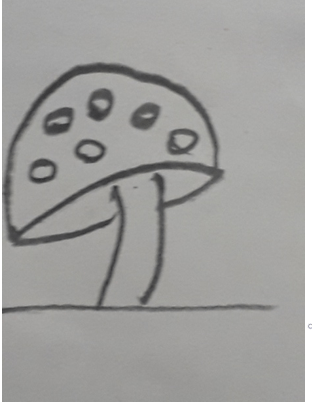This set of Class 11 Biology Chapter 2 Multiple Choice Questions & Answers (MCQs) focuses on “Biological Classification – Fungi – 2”.
1. Phycomycetes are also called as ______
a) Sac fungi
b) Conjugation fungi
c) Club fungi
d) Imperfect fungi
View Answer
Explanation: Phycomycetes are also called as Conjugation fungi. Because, phycomycetes can reproduce using dissimilar gametes i.e. anisogamous fertilization can take place and hence came the name conjugation fungi.
2. Rhizopus belongs to _________
a) Phycomycetes
b) Ascomycetes
c) Basidiomycetes
d) Deuteromycetes
View Answer
Explanation: Rhizopus also called as bread mold belongs to Phycomycetes or conjugation fungi. Other well known examples of Phycomycetes or Conjugation fungi are Mucor and Albugo (Mustard fungi).
3. Which among the following are incorrect about Phycomycetes?
a) Phycomycetes are aseptate fungi and are coenocytic
b) Phycomycetes are also called as algal fungi
c) Zygospores are formed due to isogamous fertilization and zoospores are formed due to anisogamous fertilization
d) Phycomycetes are also called as conjugation fungi
View Answer
Explanation: Zygospores are formed either due to isogamous or anisogamous fertilization. Zoospores and aplanospores are motile and non-motile spores produced due to asexual mode respectively. Phycomycetes are aseptate fungi and are coenocytic. Phycomycetes are also called as algal fungi or conjugation fungi.
4. Non-motile spores in Phycomycetes are called as _____
a) Phycospores
b) Zoospores
c) Aplanospores
d) Zygospores
View Answer
Explanation: Non-motile spores in Phycomycetes are called as Aplanospores and motile spores are known as Zoospores. Fusion of similar or dissimilar gametes through sexual mode results in Zygospores.
5. Asexual spores in Ascomycetes are called as _______
a) Ascospores
b) Conidia
c) Sporangiospores
d) Aeciospores
View Answer
Explanation: Asexual spores in Ascomycetes are called Conidia and are produced exogenously by conidiocarps. Sexual spores in Ascomycetes are called Ascospores and are produced endogenously in asci present inside Ascocarps.
6. Which among the following is incorrect about Ascomycetes?
a) Mycelium in Ascomycetes is septate and coenocytic
b) Ascomycetes are also called Sac fungi
c) Asexual spores in Ascomycetes are called as Conidia and are produced exogenously by conidiocarps
d) Sexual spores in Ascomycetes are called as Ascospores and are produced endogenously by Ascocarps
View Answer
Explanation: Mycelium in Ascomycetes are septate and branched but not coenocytic. Ascomycetes are also called Sac fungi. Asexual spores in Ascomycetes are called as Conidia and are produced exogenously by conidiocarps. Sexual spores in Ascomycetes are called as Ascospores and are produced endogenously by Ascocarps.
7. Pencillium belongs to _________
a) Ascomycetes
b) Phycomycetes
c) Basidiomycetes
d) Deuteromycetes
View Answer
Explanation: Pencillium belongs to Ascomycetes. Other well-known examples of Ascomycetes comprise of yeast, aspergillus and Neurospora. Pencillium is also used in preparation of drugs like Penicillin.
8. The figure shown below belongs to _______

a) Ascomycetes
b) Basidiomycetes
c) Phycomycetes
d) Deuteromycetes
View Answer
Explanation: The figure given above shows Mushroom. Mushroom (Agaricus) is an example of Basidiomycetes. Other well known examples of Basidiomycetes include Puccina (Rust fungi), Puff balls and Bracket fungi.
9. Puccina is also called as _____
a) Mustard fungi
b) Rust fungi
c) Bracket fungi
d) Bread mold
View Answer
Explanation: Puccina is also called as Rust fungi and is an example of Basidiomycetes. Albugo is also known as Mustard fungi and is an example of Phycomycetes. Rhizopus which is an example of Phycomycetes is also called as Bread mold.
10. Which among the following is incorrect about Basidiomycetes?
a) Basidiomycetes is also called as Club fungi
b) Basidiomycetes grow on soil, tree logs and plants
c) Mucor, Puccina and Puff balls are examples of Basidiomycetes
d) Basidiospores are sexual spores in Basidiomycetes
View Answer
Explanation: Muccor is an example of Phycomycetes. Basidiomycetes are also called as Club fungi. Basidiomycetes grow on soil, tree logs and plants. Basidiospores are sexual spores in Basidiomycetes.
11. Basidiomycetes reproduce asexually through Conidia.
a) True
b) False
View Answer
Explanation: Basidiomycetes don’t have asexual spores. Sexual spores in Basidiomycetes are called as Basidiospores and are produced exogenously on Basidium in fruiting bodies called Basidiocarps.
12. Scientific name of common mushroom is ______
a) Albugo
b) Agaricus bisporus
c) Stolonifer
d) Muccidae
View Answer
Explanation: Agaricus bisporus is the binomial nomenclature of the mushroom. Mushroom belongs to the division of Basidiomycetes and class of Agaricomycetes. It belongs to the family Agaricaceae and order Agaricales.
13. Which among the following can’t produce spores sexually?
a) Ascomycetes
b) Basidiomycetes
c) Phycomycetes
d) Deuteromycetes
View Answer
Explanation: Deuteromycetes can’t produce spores sexually. Asexual spores in Deuteromycetes are called as Conidia. Deuteromycetes are also called as imperfect fungi due to absence of sexual reproduction.
14. Which among the following statements are incorrect?
a) Asexual spores are formed due to mitosis
b) Bracket fungi are an example of ascomycetes
c) Basidiomycetes produce sexual spores called Basidiospores exogenously in Basidium
d) Deuteromycetes reproduce asexually by Conidia
View Answer
Explanation: Bracket fungi are an example of Basidiomycetes. Asexual spores are formed due to mitosis. Basidiomycetes produce sexual spores called basidiospores exogenously in Basidium. Sexual spores are absent in Deuteromycetes but reproduce asexually through Conidia.
15. All Ascomycetes are multi-cellular eukaryotic fungi.
a) True
b) False
View Answer
Explanation: Yeast belongs to the division of Ascomycetes. Yeast is a unicellular eukaryotic fungus. All Ascomycetes are multi-cellular eukaryotic fungi except Yeast. Other familiar examples of Ascomycetes include Yeast, Aspergillus, Pencillium and Neurospora etc.
Sanfoundry Global Education & Learning Series – Biology – Class 11.
To practice all chapters and topics of class 11 Biology, here is complete set of 1000+ Multiple Choice Questions and Answers.
If you find a mistake in question / option / answer, kindly take a screenshot and email to [email protected]
- Practice Class 12 - Biology MCQs
- Practice Class 11 - Physics MCQs
- Check Class 11 - Books
- Practice Class 11 - Chemistry MCQs
- Practice Class 11 - Mathematics MCQs
